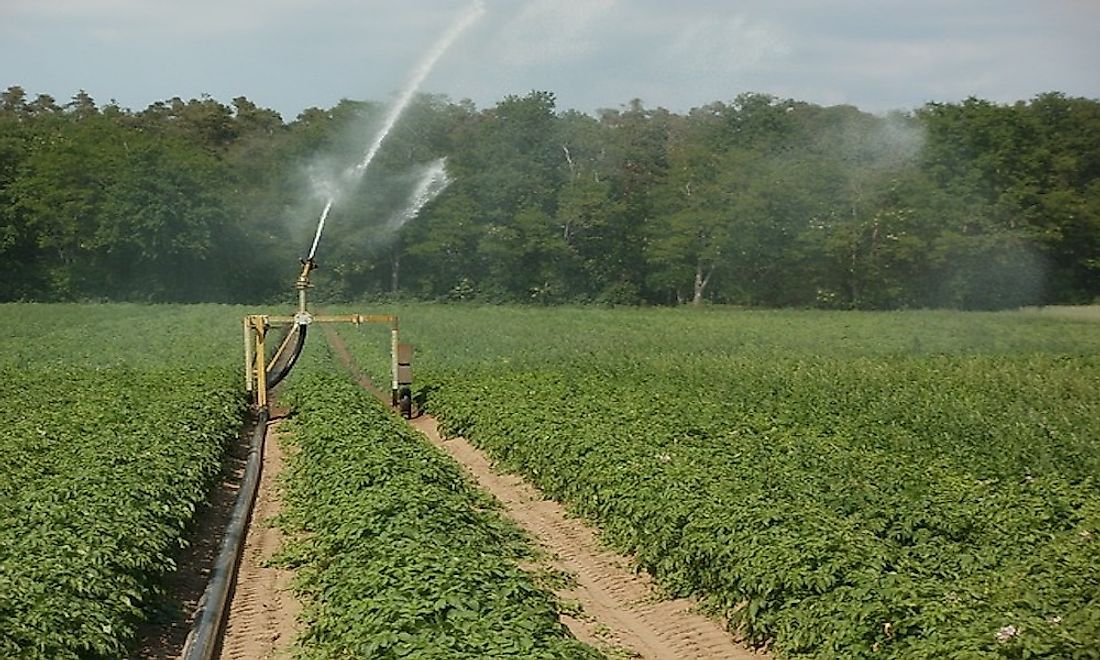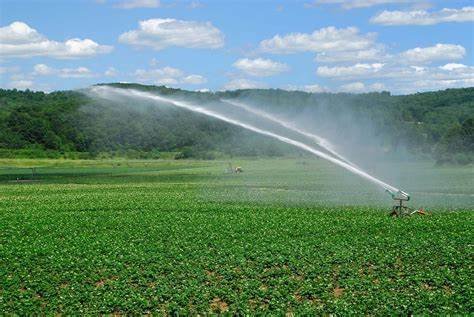Irrigation design is a key component of modern agriculture, ensuring that crops receive the right amount of water at the right time. As the global population grows and water resources become increasingly scarce, efficient irrigation systems are more important than ever. A well-designed irrigation system helps maximize crop yields, conserve water, and promote sustainability. In this article, we’ll explore the importance of irrigation design in agriculture and how it contributes to successful farming and food security.

1. Efficient Water Use and Conservation
Water is one of the most vital resources for crop growth. In many regions, however, water availability is limited, making it essential to use it as efficiently as possible. Proper irrigation design helps farmers optimize water use by delivering the right amount of water to crops in a timely and efficient manner. This minimizes waste and ensures that crops receive sufficient moisture without over-watering, which can lead to water waste and environmental damage.
How Efficient Irrigation Saves Water:
- Minimizes Runoff: Irrigation systems like drip irrigation reduce water loss by applying water directly to the plant roots.
- Prevents Over-Watering: Automated and smart systems adjust watering schedules based on soil moisture levels, preventing excessive water use.
- Maximizes Water Use Efficiency: Well-designed irrigation systems ensure that every drop of water is put to good use, benefiting both crops and the environment.
Efficient water use not only helps conserve this precious resource but also reduces irrigation costs for farmers, making it a win-win situation.
2. Boosting Crop Yields and Quality
The health and productivity of crops depend significantly on water availability. Proper irrigation design ensures that crops get the required amount of water for optimal growth. Inconsistent or inefficient watering can stress plants, leading to poor yields and reduced crop quality. With the right irrigation system, farmers can promote healthy growth, higher yields, and better-quality produce.
How Irrigation Design Enhances Crop Yields:
- Optimal Watering: Well-designed irrigation systems deliver water directly to plant roots, ensuring plants receive consistent moisture.
- Improved Root Development: Proper irrigation encourages healthy root systems, which in turn support strong plant growth.
- Reduced Stress: By providing adequate moisture, irrigation systems help prevent drought stress and allow plants to grow to their full potential.
Increased crop yields and quality are essential for food security and agricultural profitability, making irrigation design a key factor in successful farming.
3. Soil Health and Fertility
Proper irrigation design also plays a role in maintaining soil health. Over-watering or improper irrigation can lead to soil erosion, waterlogging, and the buildup of salts, which can damage crops and degrade soil quality. On the other hand, efficient irrigation helps maintain a healthy soil structure, preventing these issues and supporting the long-term fertility of the land.
How Irrigation Design Protects Soil Health:
- Prevents Erosion: By distributing water evenly, efficient irrigation systems reduce soil erosion caused by excessive water runoff.
- Avoids Waterlogging: Systems like drip irrigation apply water directly to the soil, reducing the risk of waterlogging and root damage.
- Minimizes Salinity: Proper irrigation techniques help prevent the buildup of salts in the soil, which can negatively affect crop growth.
By protecting soil health, irrigation systems contribute to the sustainability of farming and ensure that land remains fertile for future generations.
4. Reducing Environmental Impact
Traditional irrigation methods, such as flood irrigation, can have a negative impact on the environment. They can lead to excessive water use, waterlogging, soil salinization, and runoff, which pollutes nearby water sources. On the other hand, modern irrigation design incorporates technologies like drip irrigation, automated systems, and precision watering that minimize water waste and reduce the environmental footprint of farming.
How Sustainable Irrigation Reduces Environmental Impact:
- Water Conservation: Modern irrigation systems use water efficiently, reducing the strain on local water sources.
- Reduced Runoff and Pollution: Technologies like drip irrigation and automated systems prevent excess water runoff, which can carry chemicals and nutrients into nearby water bodies.
- Lower Energy Consumption: Automated and solar-powered irrigation systems reduce energy use, decreasing the carbon footprint of farming.
Sustainable irrigation design helps farmers reduce their environmental impact while maintaining agricultural productivity.
5. Cost Savings and Increased Profitability
Water costs can make up a significant portion of a farm’s expenses, especially in regions where water is scarce or expensive. An efficient irrigation design helps reduce these costs by minimizing water use and ensuring that crops receive adequate moisture without waste. Additionally, automated irrigation systems save farmers time and labour, further reducing operational costs.
How Irrigation Design Saves Money:
- Lower Water Bills: By using water more efficiently, farmers can significantly reduce their water costs.
- Reduced Labor Costs: Automated irrigation systems reduce the need for manual labour, saving farmers both time and money.
- Increased Efficiency: Better irrigation design means fewer resources spent on fixing water-related problems like over-watering or under-watering.
By reducing both water and labour costs, effective irrigation design contributes to higher profitability and financial sustainability for farmers.
6. Climate Change Adaptation
As climate change continues to alter weather patterns and increase the frequency of droughts, farmers are facing new challenges in maintaining their crops. Proper irrigation design helps mitigate these challenges by ensuring that crops receive reliable and consistent water, even during periods of dry weather. By using advanced irrigation technologies like smart sensors and automated systems, farmers can adjust watering schedules based on changing weather conditions, adapting to the challenges posed by climate change.
How Irrigation Design Supports Climate Change Adaptation:
- Water Efficiency: Advanced systems ensure that water is used efficiently, even in drought-prone areas.
- Responsive to Weather: Smart irrigation systems can adjust to weather changes, ensuring crops get the right amount of water.
- Resilience in Dry Conditions: Proper irrigation design helps maintain crop health during periods of low rainfall or extreme heat.
By enabling farmers to adapt to changing climate conditions, efficient irrigation design plays a crucial role in securing food production in the face of climate challenges.
7. Enhancing Food Security
As the global population grows, ensuring a steady and reliable food supply becomes more critical than ever. Irrigation design helps improve crop production and food security by providing crops with consistent water throughout their growth cycle. This leads to more stable and higher yields, reducing the risk of food shortages and ensuring that enough food is available to meet the needs of the population.
How Irrigation Design Contributes to Food Security:
- Increased Yields: Efficient irrigation systems help farmers grow more food with fewer resources.
- Consistent Harvests: By providing consistent moisture, irrigation design reduces the risk of crop failure due to drought or inconsistent rainfall.
- Sustainable Practices: Sustainable irrigation techniques protect water resources, ensuring that food production remains viable in the long term.
By ensuring reliable water availability and increasing crop production, irrigation design plays a key role in improving food security worldwide.
Conclusion
Irrigation design is an essential aspect of modern agriculture, helping farmers optimize water use, increase crop yields, protect soil health, and reduce environmental impact. As water becomes an increasingly scarce resource, efficient irrigation systems will continue to play a pivotal role in ensuring food security and supporting sustainable farming practices. From reducing costs to adapting to climate change, the importance of irrigation design in agriculture cannot be overstated. By investing in advanced irrigation systems, farmers can improve productivity, conserve resources, and contribute to a more sustainable agricultural future.




